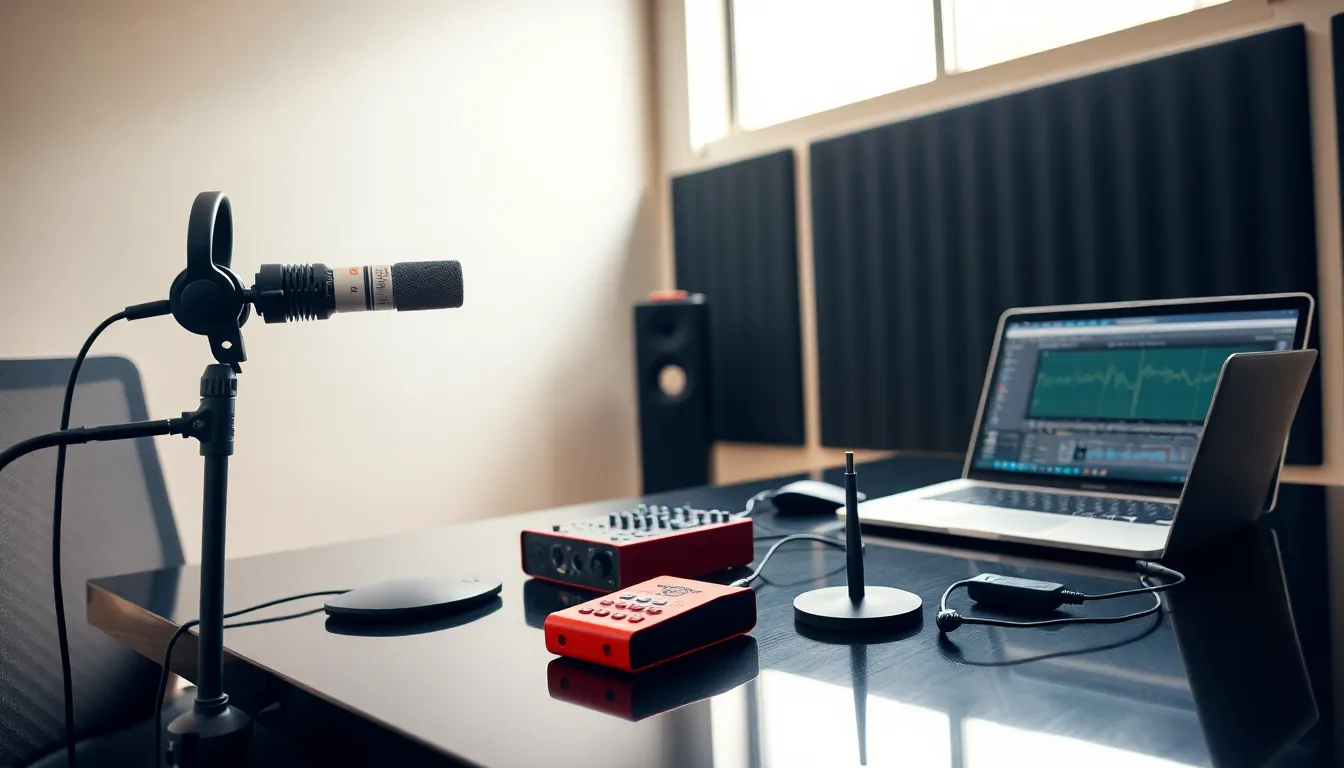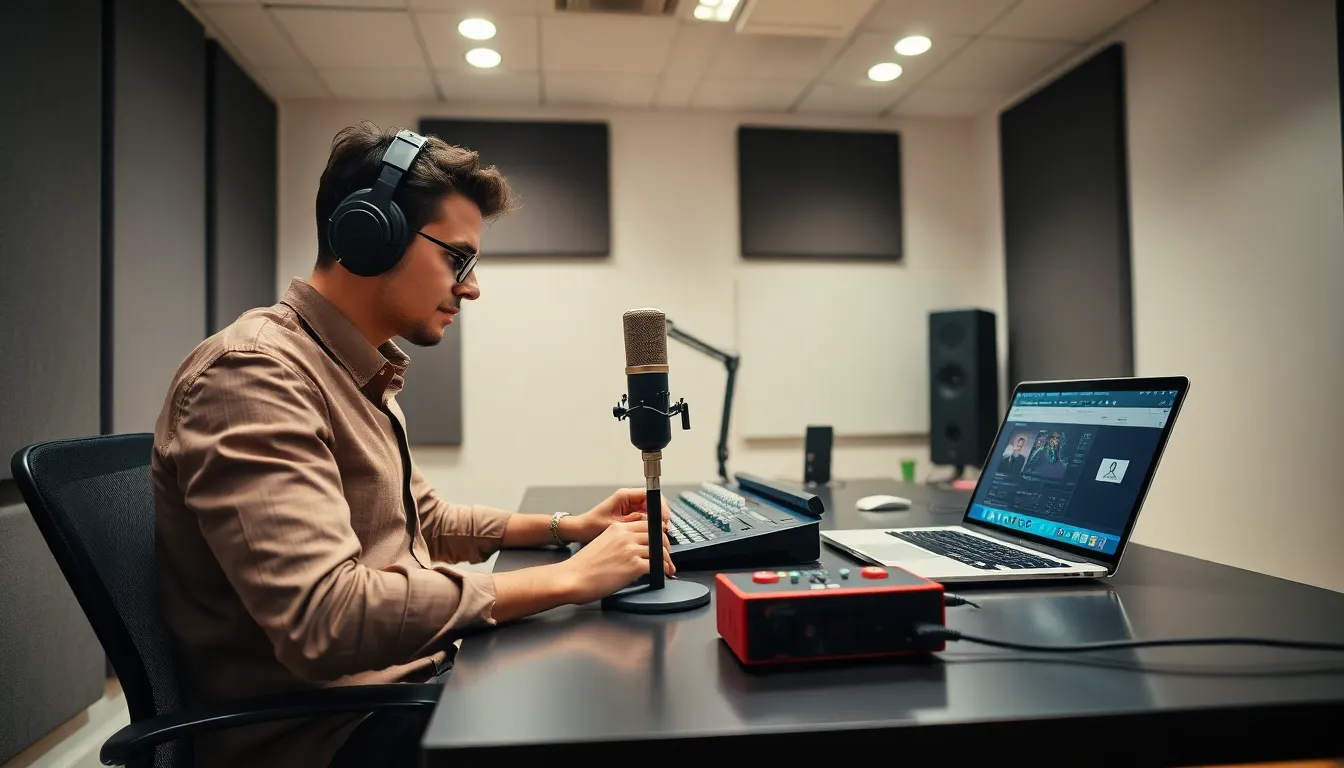Table of Contents
ToggleAre you ready to jump into the world of podcasting? Whether you’re a seasoned host or just getting started, a solid podcasting setup can be the difference between a show that sounds like it was recorded in a professional studio and one that sounds like it was captured inside a tin can. In this comprehensive guide, we’ll cover everything from essential equipment to effective workflows. We promise it won’t be boring, after all, who wants to tune into an audio experience that has all the excitement of a dial tone? Buckle up, grab that notepad (or your favorite recording device), and let’s get you set up for success.
Essential Equipment for Your Podcasting Setup

When it comes to podcasting, having the right equipment can make or break the sound quality of your show. Here are the essentials you’ll need:
Microphones: Choosing the Right One
Selecting the right microphone is paramount. Dynamic microphones are often the go-to choice for podcasters because they pick up sound directly in front of them while minimizing background noise. Popular options include the Shure SM7B and the Audio-Technica ATR2100x. Don’t forget USB microphones if you prefer convenience: the Blue Yeti is a favorite for many.
Audio Interfaces and Mixers: What You Need
An audio interface converts your microphone’s analog signal into a digital signal. For beginners, USB audio interfaces like the Focusrite Scarlett Solo are user-friendly and offer great quality. If you plan to have guests or multiple mics, consider a mixer. Mixers like the Behringer Xenyx can help you manage audio levels and provide a more versatile setup.
Headphones: Importance of Monitoring Your Audio
Good headphones are crucial. They allow podcasters to monitor audio quality during recording and editing. Over-ear headphones like the Audio-Technica ATH-M50x do a great job blocking out external noise, making your listening experience much clearer. Ensuring you can hear every nuance can significantly improve your podcast’s final output.
Recording and Editing Software: Options to Consider
Once your hardware is all set, it’s time to look at software. Recording and editing software can vary widely, depending on your comfort level and requirements.
Audacity is a favorite free option that offers powerful editing features for those just starting. For those willing to invest a bit, Adobe Audition provides a professional-grade experience along with a plethora of effects and tools. GarageBand also remains a popular choice for Mac users looking for user-friendly design with robust functionality. Whatever option you choose, make sure it aligns with your workflow and preferences.
Setting Up Your Recording Space
Your recording space plays a massive role in the quality of your podcast. Here are some tips to get it right:
Soundproofing: Tips for a Professional Sound
Creating a sound-treated environment can minimize unwanted noise. Invest in acoustic panels or foam, and find soft furnishings to absorb sound. Even simple things like closing windows or turning off noisy appliances can make a significant difference.
Positioning Your Equipment: Optimal Setup
Positioning is everything. Make sure your microphone is about six to eight inches from your mouth for the best sound capture. Ensure your headphones are connected to your audio interface and that you’re correctly monitoring audio levels to avoid any surprises during post-production.
Pre-Recording Checklist: Ensuring Quality Sessions
Before hitting that record button, it’s essential to have a checklist in place. Here’s a quick run-through:
- Test Your Equipment: Ensure everything works as intended, microphone, headphones, and interface.
- Check Your Levels: Ensure audio levels are balanced to avoid issues later.
- Back Up Everything: Always have a backup recording option, whether an app on your phone or a secondary recording device.
- Prepare Your Script or Outline: Know what you’re going to discuss, but leave room for spontaneity.
Creating an Effective Workflow
A structured workflow will help streamline your podcasting process. Here’s how to align your tasks effectively:
- Plan Your Episodes: Have a content calendar to outline episode topics and dates.
- Set Time Limits: Keep your recording sessions within a specific timeframe to maintain energy and focus.
- Edit Efficiently: Develop a consistent editing process to help your episodes flow seamlessly. Utilizing keyboard shortcuts in your software can save time.
- Seek Feedback: Encourage listeners to provide feedback. Their insights can enhance your content and refine your workflow.
Publishing and Promoting Your Podcast
Once you’ve recorded and edited your episodes, it’s time to get them out into the world.
Choose a hosting platform like Libsyn or Podbean. These platforms ensure your podcast is distributed to major directories like Apple Podcasts and Spotify.
To promote your podcast, consider social media. Create graphics for episode releases and share behind-the-scenes content. Engaging with listeners by responding to comments can create a loyal audience base. Collaborate with other podcasters to expand your reach and gain new followers.




